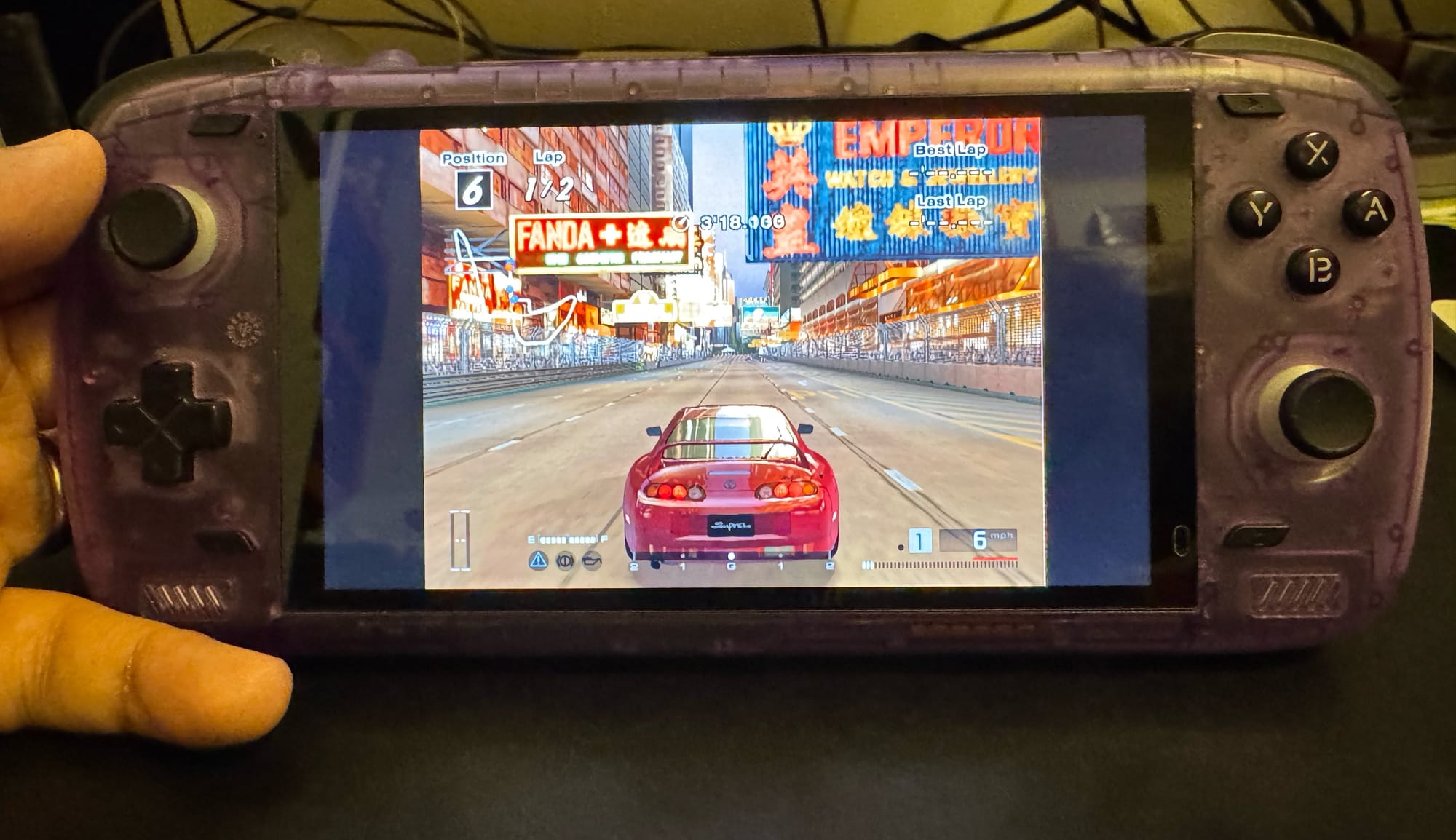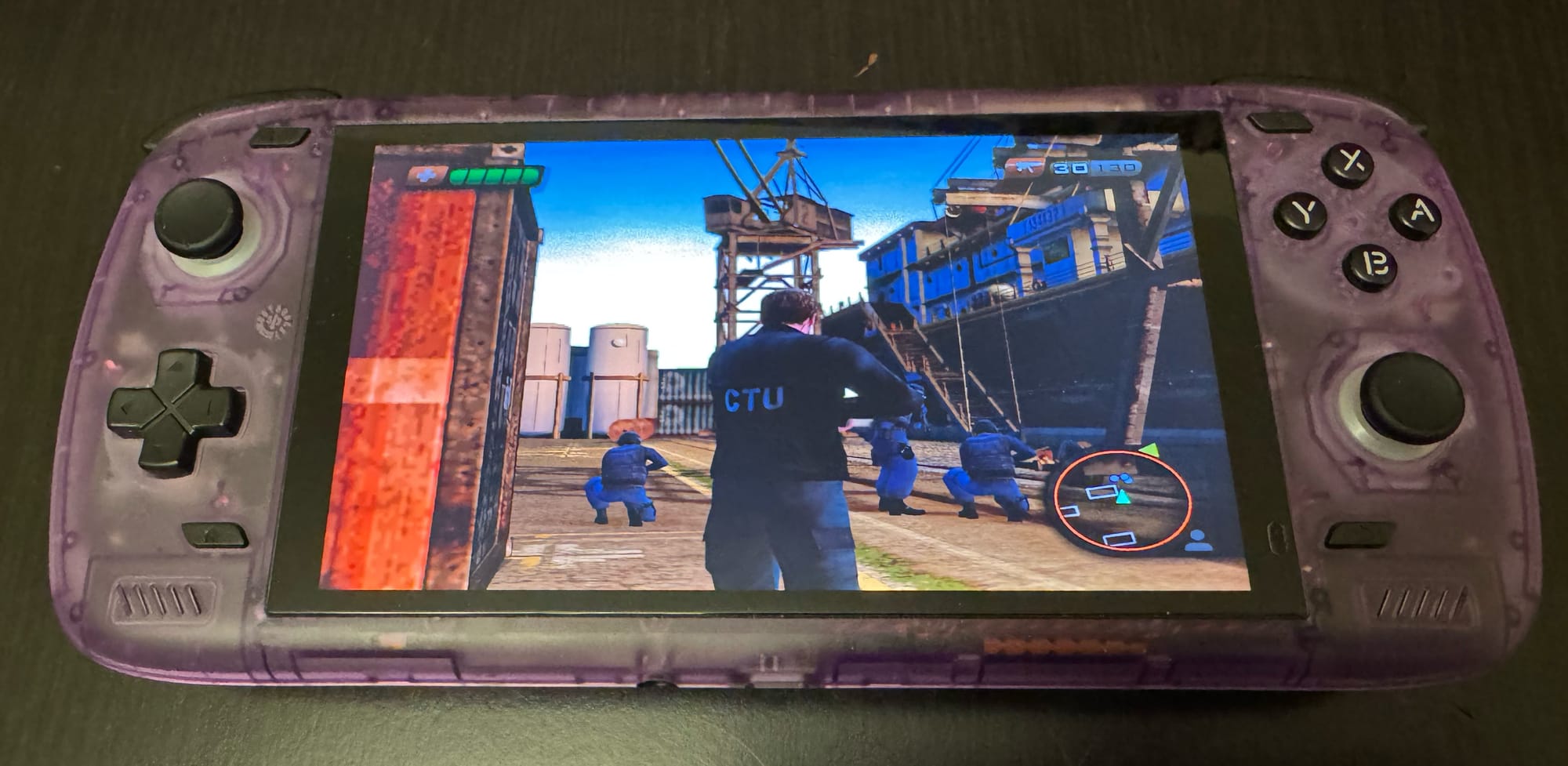Help, I’m addicted to retro gaming handhelds!
Emulation portables from China allow me to access older games that are hard to play today.

The biggest name in handheld gaming that you’ve never heard of is Anbernic.
When you think about portable game consoles, the Game Boy or Switch is probably the first ones that come to mind. Older gamers might think of Sega’s battery-munching Game Gear or Sony’s ambitious PlayStation Portable; these days folks are more likely to think of portable gaming PCs, as embodied by Valve’s Steam Deck.
But there’s another portable revolution going on, one that’s mostly slipped under the radar: retro gaming handhelds. These devices, mostly from China, are loaded with emulators that play classic games from systems that stretch from the Atari 2600 (released in 1977) to the Wii U (2013).
Anbernic kicked it all off with their first handheld in 2017, although it took a few years to catch on. There aren’t any reliable sales figures to show how the market has grown. But one easy indicator is to see just how many companies are now joining in with their own devices. AYN, Retroid and Miyoo all make well-regarded handhelds; Anbernic itself releases around four to five different models every year.
And that means one of the really exciting things is that there is so much variety. You can get a small, cheap handheld that runs simple 8-bit games from the 80s or you can splurge on a bigger, beefier one that’ll run PlayStation 2 games.

Some are the size of keychains; others have screens the same size as the Switch. Some are pretty basic; others run Android and have state-of-the-art smartphone chips. Some are shaped exactly like old Nintendo consoles; others, like the square screen on the RG Cube, are like no handheld you’ve ever seen before. We’re at the point where, no matter what you’re looking for, there’s something to suit your needs.
And you know what? I’m hopelessly addicted to them.
I’ve collected a bunch of these handhelds already, and I’m always looking out for news about what’s coming next. That might seem an odd thing to say about devices dedicated to playing old games, but there’s so much variety here that each handheld has its own use.
If I want to play Burnout 3: Takedown again — the best in the series, frankly — I’ll grab the big Odin 2 Pro, which has the power to run that PS2 game smoothly at HD resolution. If I want to play a small Game Boy game, like the fan translation of The Frog for Whom the Bell Tolls, I can use the smaller, lighter Retroid Pocket 3+. While the Steam Deck is not an emulation handheld, it's also great for emulation – especially for more niche things like Model 3 arcade games. (But that's a topic for another post...)
Weirdly, the thing I find most compelling is actually just setting these devices up. Every time I get a new one, I spend hours — days, even — working on it. I’ll start by curating my (massive) collection of games into smaller sets of what I’d like to play on that device; what works well here, and what haven’t I tried in a while? Then there’s making it look good, organizing everything into playlists, checking that all the names and metadata are correct, and downloading cover art. And, of course, fiddling with the settings — do I go for something safe but smooth, or push the envelope for better graphics at the expense of performance?

There is so much tinkering to do, so much tinkering that you’re able to do, that I spend ages doing it… and then I usually rarely actually play the games. I’ll play a few, for sure. But there’s something about the act of setting it all up that I find so supremely satisfying, something that scratches this itch in my brain when I make sure it’s organized so everything looks neat and official.
Which brings me up to a big caveat: one of the reasons these handhelds have flown under the radar is that they are not official at all. You’ll have to provide your own digital copies of games (ROMs); no, I will not link to any or tell you where to get them. I do have over a thousand classic games and the hardware needed to make digital copies of them, but I’m also fully aware that most people using retro handhelds just use ROMs they’ve downloaded off the internet.
I’m not here to judge anyone for that, because there are so many games out there that are either impossible or extremely difficult to play nowadays. For some titles, this is one of the only ways you can play them again.
Take, for instance, 24: The Game. I can say with complete confidence that this PS2 game will never be released again. It’s a decent, but not exceptional, shooter based on a TV show that went off the air a decade ago. It’s also filled with the faces of real actors, all of whom would need to be licensed (and paid) again. That would drive up the price, and the market for the game is small as is. It simply isn’t worth the effort or expense to remaster and re-release that game.

I bought it, back in the day. It’s a unique little time capsule of a very particular time both in world history and my own life, and sometimes I think about replaying it. I still have the original PS2 disc, but that's only half the battle. I’d need to find a working console — my own PS2’s disc drive died long ago. I’d need special cables to hook it up to a modern TV, and even then they won’t look right; classic systems weren’t designed for modern displays.
Or… I could rip the DVD and stick it on my Odin 2. It’d look sharper and run smoother than it ever did on the PS2, and it’d fit on a device I can take anywhere that holds hundreds of other games from dozens of other systems. What’s not to like about that?
And it’s not just lesser-known titles like 24. Burnout 3 and F-Zero GX are the best entries in their storied franchises; they’ve never been released on anything but their original platforms. The Legend of Zelda: Wind Waker HD is the definitive version of a classic — but it’s stuck on the Wii U, a deeply unsuccessful system that few people (um, hi) bought.
And I think that’s what drives my obsession with these handhelds: access. These are all games I owned, games I loved, but games I can’t play anymore. And so I’ll spend ages setting things up and tinkering with a new retro handheld so I have access to them.
I don’t always want to play old games again. But knowing that I can is enough to satisfy me.





